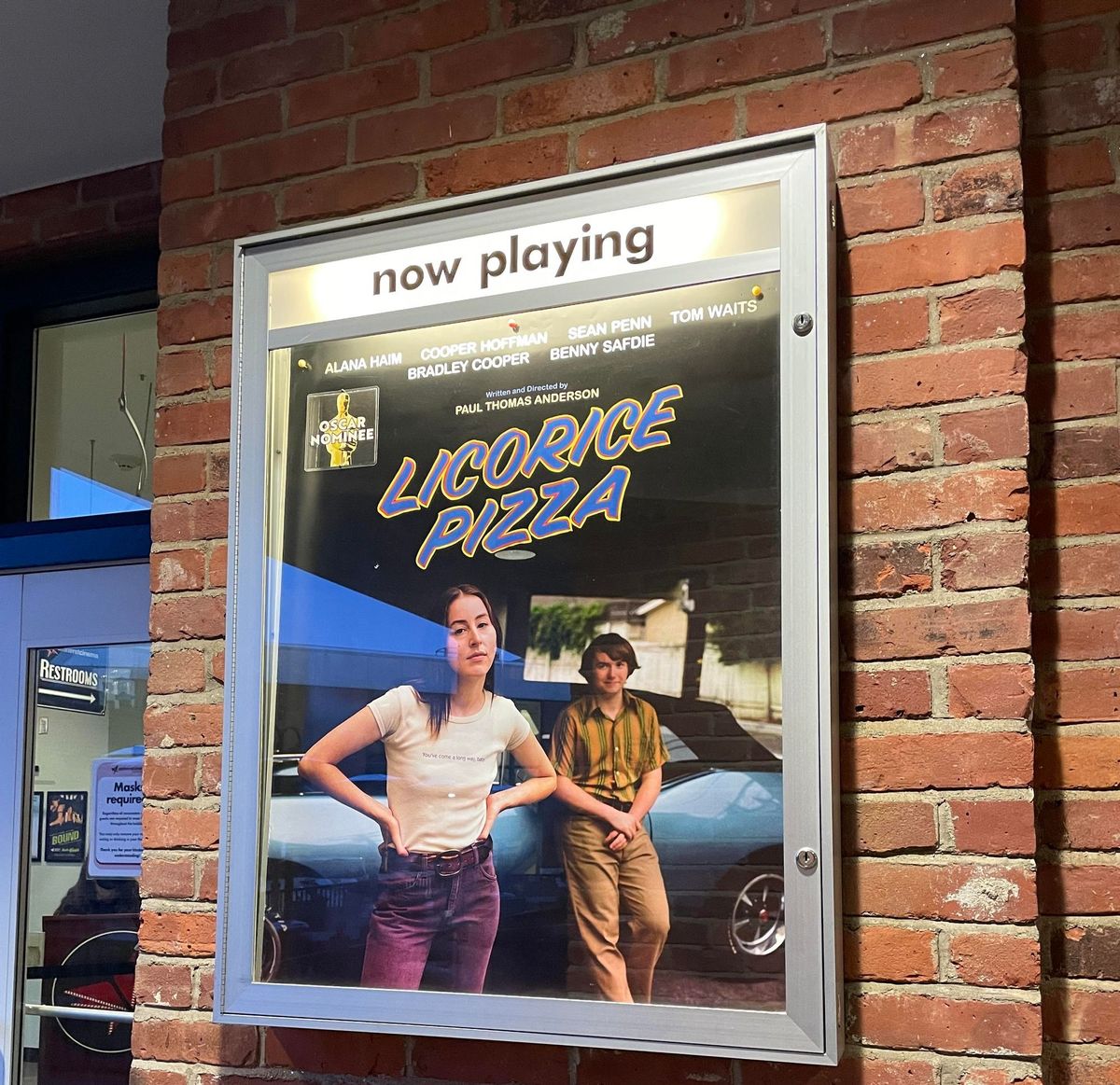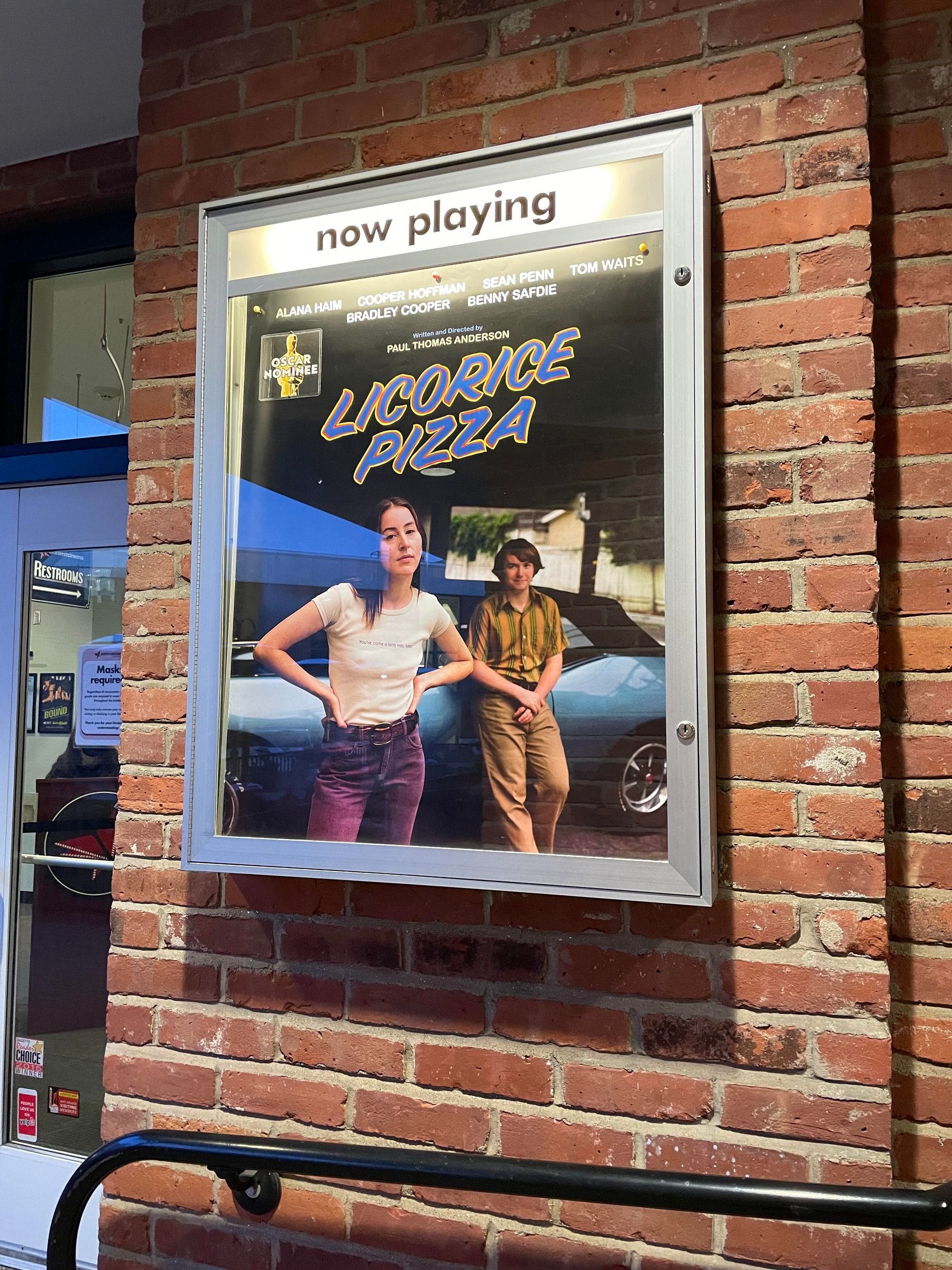“Licorice Pizza” and the Spectacle of Banality
Cole Warren ’24 reviews the Oscar-nominated, controversial “Licorice Pizza,” which follows the romance of a 15-year-old and a 25-year-old in 1970s Hollywood.


Nominated for three Oscars, Director Paul Thomas Anderson’s latest film, “Licorice Pizza,” is one of the most widely discussed and controversial movies of the season. Despite these simultaneous commendations and condemnations, the film is arguably one of the least watched movies to be nominated this year. Although the film was released in November and is still available in independent theaters (“Licorice Pizza” is currently playing at Amherst Cinema, for instance), it has failed to make back its budget of $30 million and has only recently become available on streaming services. This is a disappointment, because “Licorice Pizza” is one of the more unique films I have seen in the theater recently. Although elements of the film rightfully deserve criticism, Anderson’s latest picture provides a much-needed revitalization of the tired genre of 20th century period pieces.
Eschewing a linear plot, “Licorice Pizza” revolves around the exploits and adventures of Gary Valentine (Cooper Hoffman) and Alana Kane (Alana Haim) in 1970s Los Angeles. Gary, a precocious 15-year-old child actor/con-man, falls in love with Alana, a driftless 25-year-old, and loops her into numerous get-rich-quick schemes. As they navigate Los Angeles, encountering the bizarre and petty figures of old and contemporary Hollywood, these two characters grow more dependent on each other, culminating in a romance that both the characters and the audience know is inappropriate. Concerned primarily with the evolution of Gary and Alana’s friendship, the film resembles a series of vignettes, as if the movie were recreating how a person recalls past experiences with a close friend. This style proves to be a double-edged sword; while it gives an aura of authenticity to the characters’ relationships, the lack of a concrete plot makes the movie drag at times, resulting in a feeling of aimlessness.
However, “Licorice Pizza” undeniably manages to craft a spectacular depiction of 1970s America. The movie is ripe with the music of David Bowie, images of Nixon on television, waterbeds, pinball machines, the trappings of the most cliched retellings of this period of American history. Yet, unlike many other films that depict the past in this manner, what separates “Licorice Pizza” is its continued insistence on the banality lying beneath this veneer of spectacle. Movies like “Forrest Gump” and “Once Upon a Time in Hollywood” offer a nostalgic look at the late 20th century, if not outright glamorizing it. And when the pervasive social problems of this era inevitably come up, the films often sanitize their protagonists, absolving their hyperreal depiction of the past of any culpability in America’s long history of injustice. “Licorice Pizza,” on the other hand, is able to deviate from this cliche and immerse the viewer in the shallowness and desperation of both the time and of its main characters.
The film does not shy away from presenting the vanity of Hollywood, where the performers and socialites of the past are revealed to be nothing more than washed up has-beens, addicted to the control over others their fame guarantees. Gary and Alana do not escape this either, which is why I found the criticism regarding their age difference to be unfounded. Over the course of the film, it becomes apparent that both Gary and Alana are selfish in their own ways, and their relationship toward each other is ultimately portrayed as toxic, satisfying Gary’s desire to be perceived as an adult and Alana’s desire for purpose in her life. Like the aesthetic veneer of the 1970s that hides the corruption and desperation of the time, Gary and Alana’s seemingly triumphant declaration of love at the film’s conclusion is nothing more than a facade for an unambiguously shallow and unhealthy relationship. The film may present itself as a love story, but its constant hints at the toxicity inherent to their relationship demonstrates that the two characters are simply trying to masquerade their own faults and failures in their pursuit of romance and closure.
Despite the film’s successful depiction of the banal and consumerist nature of the 1970s, however, “Licorice Pizza” repeatedly falls prey to the same shallowness that it tries to criticize. Early on in the film, there are two scenes where a white character speaks in a racist caricature of a Japanese accent. While the point of the scene is to criticize the white character’s racism, the film ultimately does no better, unnecessarily repackaging racism for the sake of humor. In this regard, “Licorice Pizza” is a prime example of the repeated failures of many Hollywood films to effectively satirize the bigotry of American culture.
“Licorice Pizza” is a complex and contradictory film. Paul Thomas Anderson undertook the difficult task of balancing a subversion of American nostalgia with a compelling and enthralling cinematic depiction of 1970s Hollywood. While the film has earned apt criticism for its failures to navigate this retelling of the past, it emerges as more successful than most American films set in this period by not sanitizing its protagonists. The incredible acting debuts of its leads are able to overcome the difficult task of portraying selfish and complex characters who are nonetheless still empathetic and engaging to watch. “Licorice Pizza” is not a film for everyone, but it is a cinematic experience that will linger in your mind well after the credits roll.





Comments ()